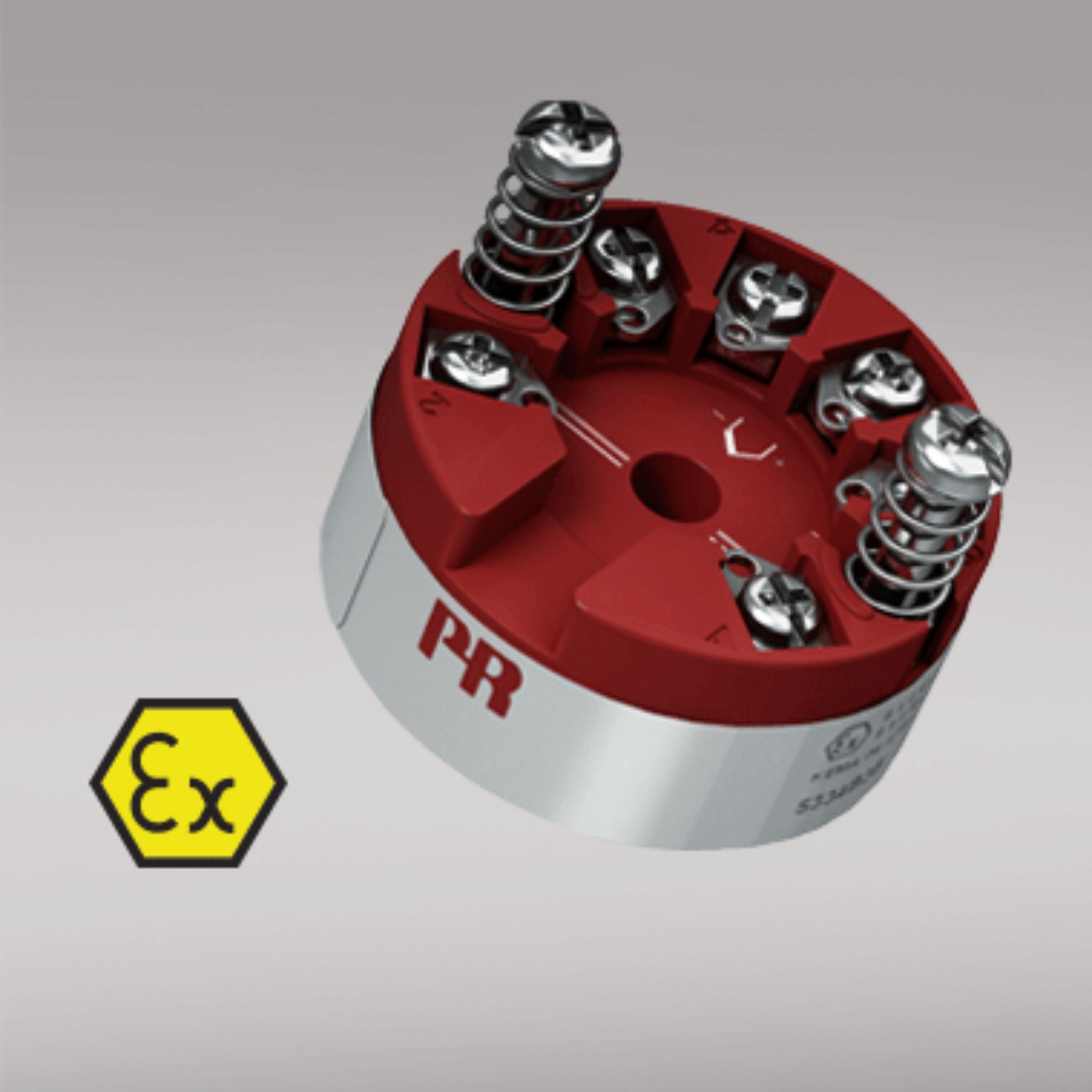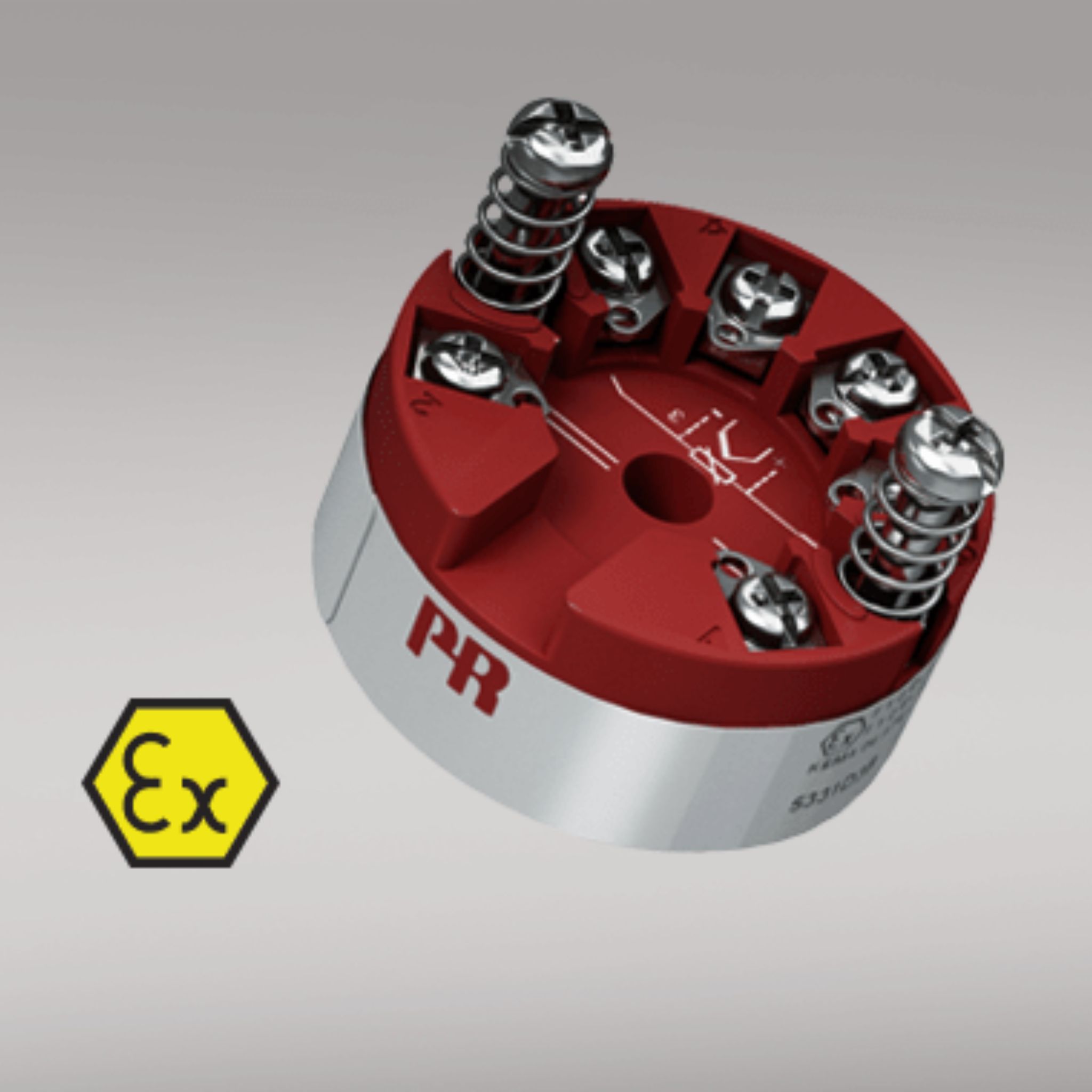Browse our selection of temperature transmitters with 4-20mA output for various applications. High performance temperature transmitters from PR Electronics and Nokeval. RTD and thermocouple transmitters for ATEX and SIL.
Industrial 4-20mA Temperature Transmitters
High-quality temperature transmitters, custom-built to meet the diverse needs of UK and Ireland businesses.
At Process Parameters, we’re your trusted supplier of high-quality temperature transmitters, renowned for their accuracy and reliability across all industries and applications.
From temperature transmitters for process control to those for data acquisition and monitoring, we have the perfect solution for your needs.
If you have any questions or need help finding the best temperature transmitter for your application, please get in touch.
We also offer a calibration service if required. See more about our calibration services here.
Why Choose Industrial Temperature Transmitters?
Enhance Accuracy: Ensure precise temperature measurements for critical processes and applications.
Improve Efficiency: Optimise production processes by maintaining accurate temperature control.
Ensure Safety: Monitor temperatures to prevent overheating and ensure safe operating conditions.
Support Quality Control: Maintain product quality by accurately measuring and controlling temperatures.
Our Range of High-Performance Industrial Temperature Transmitters
Whether you’re a manufacturing professional, researcher, or simply looking for a reliable tool for temperature measurement, we have the right transmitter for you.
Key Features:
Superior Accuracy: Experience precise and reliable temperature measurements for critical applications.
Wide Temperature Range: Measure temperatures from very low to high-heat environments.
Durable Construction: Built to withstand harsh industrial conditions and provide long-lasting performance.
Advanced Features: Explore options like digital displays, data logging, and wireless connectivity.
Why Choose Process Parameters?
Expertise: Our UK team offers unmatched knowledge in temperature measurement technology.
Support: We’re here to help you find the best temperature transmitter for your application.
Service: We offer calibration services to ensure your equipment’s accuracy.
Value: Competitive pricing on all temperature transmitters.
Quality: We’re a trusted temperature transmitter provider UK businesses depend on.
Applications Across Industries
Our temperature transmitters serve diverse sectors in the UK and Ireland:
Manufacturing & Industrial
Applications: Process control, machinery monitoring, quality assurance.
Benefits: Ensures precise temperature control for optimal production efficiency and product quality.
Food Processing & Beverage
Applications: Cooking, pasteurisation, storage, and transportation.
Benefits: Maintains food safety and quality by monitoring temperatures throughout the production process.
Chemical & Pharmaceutical
Applications: Reaction monitoring, storage, and transportation of chemicals and pharmaceuticals.
Benefits: Ensures the safety and efficacy of chemical reactions and pharmaceutical products.
Research & Development
Applications: Laboratory experiments, material testing, and scientific research.
Benefits: Provides accurate temperature data for reliable research outcomes.
Energy & Utilities
Applications: Power generation, transmission, and distribution.
Benefits: Enhances the efficiency and safety of energy production and distribution processes.
Healthcare & Medical Research
Applications: Patient monitoring, equipment sterilisation, and laboratory testing.
Benefits: Ensures patient safety and the accuracy of medical research.
Building & Construction
Applications: HVAC systems, insulation testing, and building automation.
Benefits: Improves energy efficiency and comfort in buildings.
Automotive
Applications: Engine monitoring, exhaust systems, and climate control.
Benefits: Enhances vehicle performance and safety.
Aerospace & Defense
Applications: Engine monitoring, environmental control, and equipment testing.
Benefits: Ensures the reliability and safety of aerospace and defence equipment.
Oil & Gas
Applications: Refinery processes, pipeline monitoring, and storage.
Benefits: Enhances the efficiency and safety of oil and gas operations.
Mining & Metallurgy
Applications: Smelting, refining, and material processing.
Benefits: Ensures the quality and safety of mining and metallurgical processes.
Environmental Monitoring
Applications: Water quality, air quality, and climate monitoring.
Benefits: Provides accurate data for environmental research and regulatory compliance.
Electronics & Semiconductors
Applications: Component testing, manufacturing processes, and quality control.
Benefits: Ensures the reliability and performance of electronic components.
Food Service & Hospitality
Applications: Cooking, storage, and transportation of food and beverages.
Benefits: Maintains food safety and quality in restaurants, hotels, and catering services.
Agriculture & Horticulture
Applications: Soil temperature monitoring, greenhouse control, and crop storage.
Benefits: Enhances crop yield and quality by maintaining optimal growing conditions.
PR Electronics Transmitters
As a prominent distributor of PR Electronics products in the UK and Ireland, Process Parameters offers an extensive range of temperature transmitters from PR Electronics.
PR Electronics is a well-known Danish company that specialises in the development and production of dependable solutions for process control.
Ready to Buy an Industrial Temperature Transmitter?
Whether you’re looking to buy industrial temperature transmitters or need a temperature transmitter cost estimate, we’re here to help.
Contact us today for a personalised temperature transmitter quote. Our experts are ready to guide you through our range of industrial temperature transmitter options.
Explore our range of industrial temperature transmitters and find the perfect solution for your needs.
Not sure what you need? Our team can provide expert advice on the best temperature transmitters for your specific application.
Call us at 01628 778788 or email sales@processparameters.co.uk to discuss your needs today.
FAQs
What is a Temperature Transmitter?
A temperature transmitter is a device that measures temperature and converts this measurement into an electrical signal. It is designed to convert the temperature of a system into a standardised electrical signal, typically a 4-20mA current loop or a digital signal.
This signal can be sent to other equipment, like control systems or displays, for monitoring and analysis. It helps to monitor temperature from a distance and is often used in industrial settings to ensure proper temperature control and safety.
Read more in our article: What is a temperature transmitter?
How Does a Temperature Transmitter Work?
A temperature transmitter works by converting temperature measurements from a sensor into electrical signals that can be easily transmitted and interpreted. The process involves:
Sensing: The temperature sensor (like a thermocouple or resistance temperature detector) detects the temperature of the environment.
Signal Conversion: The transmitter converts this temperature data into an electrical signal. It might use methods like resistance changes (RTDs) or voltage differences (thermocouples) to do this.
Amplification: The electrical signal is amplified to make it stronger and suitable for transmission over longer distances.
Linearisation: Sometimes, the transmitter adjusts the signal to account for the non-linear characteristics of certain temperature sensors. This makes the signal easier to interpret accurately.
Transmission: The amplified and possibly linearised signal is sent through wires or wireless methods to a receiving device, like a control system or display.
Interpretation: The receiving device interprets the signal and displays or records the temperature value in a readable format.
In short, a temperature transmitter transforms temperature data into an electrical signal, allowing remote monitoring and control of temperature conditions.
What are the Different Types of Temperature Transmitters?
There are different kinds of temperature transmitters, each with its own way of fitting and use:
Head-Mounted Transmitters: These fit right into the sensor’s connection head. They’re simple to install and need less wiring.
Field Mount Transmitters: Tough and resilient, these are made for tough places. They stay protected in sturdy enclosures.
Rail Mount Transmitters: Put these on DIN rails, handy for grouping in a panel for easy access.
Explosion-Proof Transmitters: For dangerous zones, these precise transmitters need skilled engineers. They can be DIN rail or head-mounted and come with ATEX and IECEx certifications.
What Does a Temperature Transmitter Do?
A temperature transmitter is a device that measures and converts temperature readings from a sensor into an electrical signal. This signal can then be sent to a control system, such as a PLC or DCS, which can use it to monitor and control temperature in various industrial processes.
Temperature transmitters are often used in industries such as oil and gas, chemical processing, and manufacturing, where precise temperature control is critical for maintaining product quality and safety. They are also commonly used in HVAC systems to regulate indoor temperatures in buildings.
What is the Difference Between a Thermometer and a Temperature Transmitter?
A thermometer is a device that measures temperature and displays it on a screen or dial. It typically consists of a glass or plastic tube containing a liquid, such as mercury or alcohol, which expands or contracts as the temperature changes.
On the other hand, a temperature transmitter is an electronic device that converts the temperature measurement into an electrical signal and transmits it to a control system or computer.
Unlike thermometers, temperature transmitters can be connected to a network and provide continuous monitoring of temperature in real-time. They are often used in industrial settings where accuracy and reliability are critical.
Is a Thermocouple a Temperature Transmitter?
No, a thermocouple is not a temperature transmitter. A thermocouple is a sensor used to measure temperature by utilising the principle of thermal electromotive force.
On the other hand, a temperature transmitter is an electronic device that converts the output signal from a temperature sensor into a standardised signal that can be transmitted and processed by control systems or other devices. While both are used for temperature measurement, they serve different purposes and operate differently.
At Process Parameters, we can support your compact temperature transmitter requirements whatever the measurement design, in head or DIN Rail mounting. If you’re not sure what you need for your process, please get in touch and we can help identify your requirements.
4-20mA Temperature Transmitters
PR Electronics 5335D In Head HART Temperature Transmitter – ATEX
4-20mA Temperature Transmitters
4-20mA Temperature Transmitters
PR Electronics 5334B ATEX Temperature Transmitter – Thermocouple Input
4-20mA Temperature Transmitters
4-20mA Temperature Transmitters
PR Electronics 5331D Universal Input Temperature Transmitter – ATEX Approved
4-20mA Temperature Transmitters
PR Electronics 5331A In Head Temperature Transmitter – Universal Input
4-20mA Temperature Transmitters
PR Electronics 5333D RTD Temperature Transmitter – ATEX Approved
4-20mA Temperature Transmitters
PR Electronics 5333A In Head Temperature Transmitter – RTD Input
4-20mA Temperature Transmitters
4-20mA Temperature Transmitters
Universal Input Transmitter – Nokeval RMD680/RMD681 16/8 Channel










